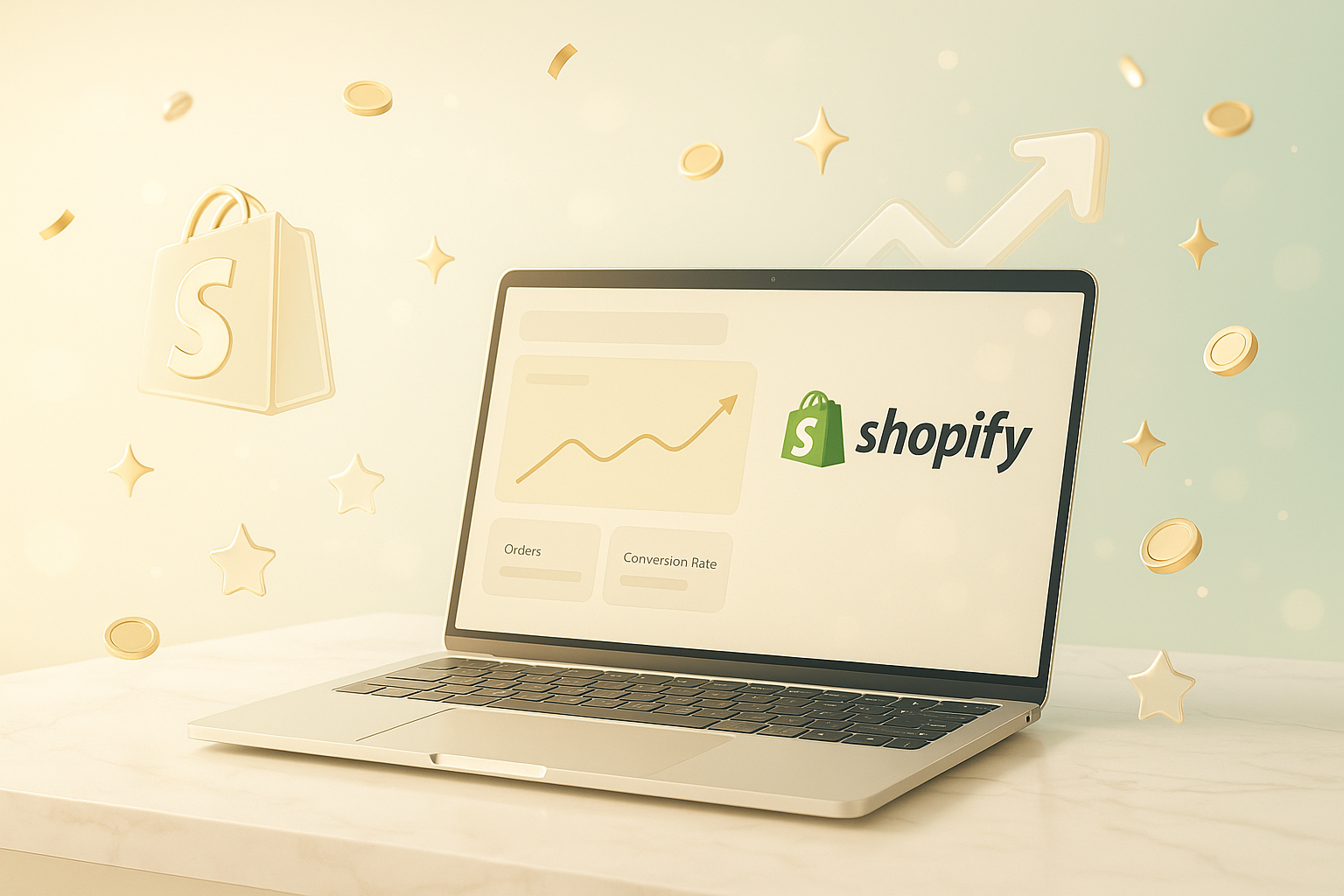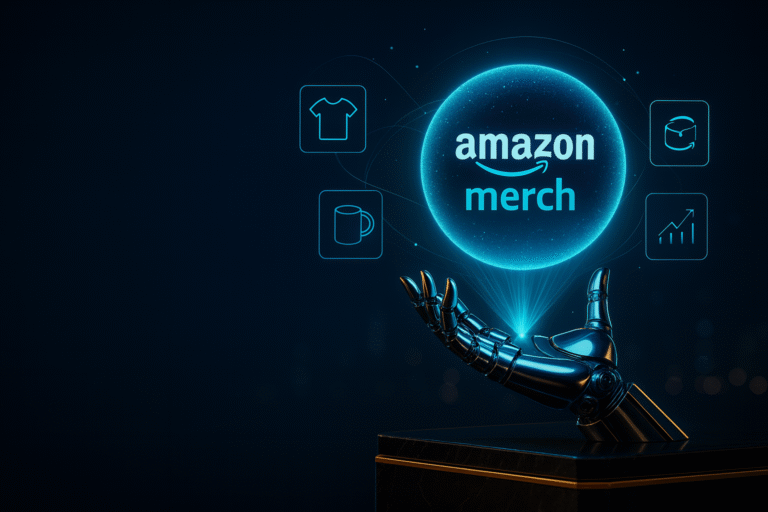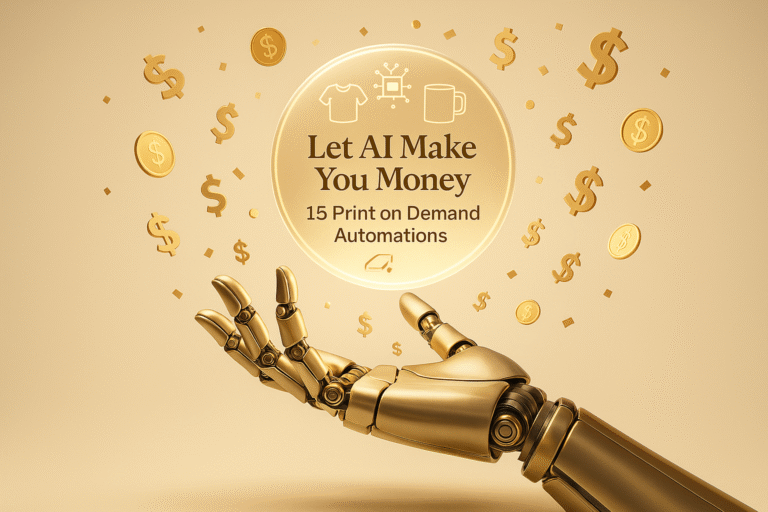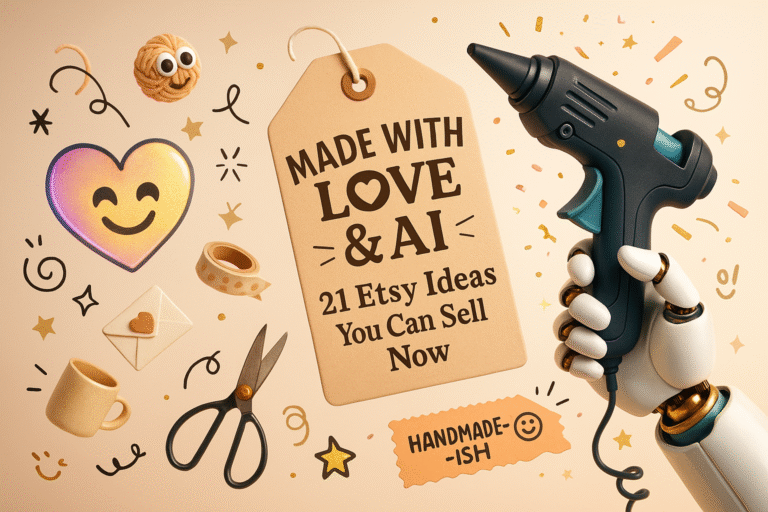The dream of running a successful online store just got easier. Emma started her jewelry business with $500 and basic AI tools—within 8 months, she was earning $12,000 monthly. Jake launched his t-shirt store using AI for everything from design to customer service, hitting $25,000 in revenue by month six. These aren’t tech experts; they’re everyday entrepreneurs who discovered that shopify ai tools can level the playing field.
The statistics are staggering: 89% of successful online retailers now use AI daily, and businesses implementing AI see 31-40% higher returns on investment. But here’s the secret most don’t realize—you don’t need a computer science degree or a massive budget to get started. The AI revolution has made professional-quality tools accessible to anyone willing to learn.
Whether you’re launching your first store or struggling to scale an existing business, these 12 proven steps will show you exactly how to harness shopify ai power without the complexity. Each step includes simple tools, real costs, and actionable strategies that beginners can implement immediately. Your automated, profitable Shopify store is just 12 steps away.
1. Set Up Your Shopify Store Foundation
Starting your Shopify journey begins with choosing the right plan and understanding what you’re building. Shopify offers plans starting at $29/month, and their 14-day free trial gives you plenty of time to get comfortable with the platform before spending money.
Your first week action plan: Choose a clean, mobile-optimized theme (your mobile visitors will represent 60%+ of your traffic), set up essential pages (About, Contact, Privacy Policy, Shipping), and configure your payment processors. Don’t overthink the initial setup—you can always refine as you grow.
The key insight from successful beginners: start simple and improve gradually. Emma’s first jewelry store looked basic, but she focused on great products and customer service while slowly improving the design. Perfection is the enemy of progress when you’re starting out.
Essential first-month tools: Your Shopify subscription, a simple logo from Fiverr, and basic product photos taken with your smartphone. Total startup cost: under $200 including your first month of inventory or print-on-demand setup.
2. Use AI for Product Research and Selection
The biggest mistake new store owners make is choosing products based on personal preference instead of market demand. AI market research tools eliminate guesswork by analyzing real consumer behavior and market trends.
Smart product research strategy: Use SmartScout to analyze Amazon bestsellers in your niche, then cross-reference with Google Trends to confirm rising demand. This approach helped Jake identify trending t-shirt designs before his competitors caught on.
For beginners, print-on-demand offers the lowest risk entry point. Services like Printful or Printify handle inventory and shipping automatically, letting you test product ideas without upfront investment.
Success story: Maria researched phone case designs using AI trend analysis and launched with 10 designs. Her top performer generated $8,000 in the first month simply because she chose designs based on data, not personal taste.

3. Create Professional Product Descriptions with AI
Writing compelling product descriptions stumps most beginners, but AI makes it simple. Shopify Magic (free with all plans) generates SEO-optimized descriptions that convert browsers into buyers.
Description writing process: Input your product details, target audience, and key benefits into Shopify Magic. The AI creates descriptions that address customer pain points while incorporating search-friendly keywords. Always review and personalize the output to match your brand voice.
Pro tip: Create templates for similar products to maintain consistency. If you need additional writing help, Fiverr offers professional copywriters who can refine AI-generated content for $10-50 per product.
The difference is immediate—AI-generated descriptions typically see 15-25% higher conversion rates than generic, feature-only descriptions because they focus on benefits and emotional connection with customers.
4. Automate Customer Service with AI Chatbots
Customer service can make or break your store, especially when you’re starting solo. AI chatbots handle 70% of common questions instantly, freeing you to focus on growing your business instead of answering “where’s my order” emails.
Easy setup approach: Start with Tidio for basic chatbot functionality. Their templates handle shipping questions, return policies, and product information automatically. Setup takes 30 minutes, and the free plan covers small stores perfectly.
Advanced automation: As you grow, ManyChat provides sophisticated chatbot sequences for Facebook Messenger and Instagram, turning social media interactions into sales conversations.
Real results: Jake’s t-shirt store uses chatbots to handle 80% of customer inquiries automatically. This saved him 3 hours daily while improving customer satisfaction scores by 40% through instant response times.
5. Set Up AI-Powered Email Marketing
Email marketing generates $42 for every $1 spent, making it crucial for long-term success. AI email platforms personalize messages based on customer behavior, dramatically improving open and click rates.
Beginner email strategy: ActiveCampaign offers powerful automation at beginner-friendly prices. Start with welcome sequences, abandoned cart recovery, and post-purchase follow-ups. Their AI optimizes send times and subject lines automatically.
Implementation timeline: Week 1 – Set up welcome series, Week 2 – Create abandoned cart sequence, Week 3 – Build customer win-back campaigns. Each automation runs automatically once configured, working while you sleep.
Success metrics: Emma’s jewelry store sees 25% of monthly revenue from automated email campaigns. The AI identifies which customers are likely to purchase again and sends perfectly timed product recommendations.
6. Optimize Product Photos with AI Tools
Professional product photos cost $200-500 per product, but AI photography tools deliver similar results for under $50 monthly. Great photos can double your conversion rates, making this investment crucial.
AI photo enhancement workflow: Use your smartphone for initial shots, then enhance with AI background removal, lighting correction, and professional formatting. Many successful stores start with basic photos and upgrade gradually as revenue grows.
Scaling solution: When ready to expand, AI model generation tools create diverse product photos without expensive photoshoots. This approach helped one fashion store save $15,000 in photography costs during their first year.
The psychology matters: customers need to trust your store before they’ll buy. Professional-looking photos signal quality and reliability, especially important for new stores without established reputations.
7. Create Social Media Content Automatically
Consistent social media presence drives traffic and builds brand awareness, but creating content daily is exhausting. AI social media tools maintain your presence automatically while you focus on other business areas.
Content automation setup: Use AI tools to transform product photos into platform-specific posts. Instagram collages, Facebook showcase posts, and Pinterest product pins can all be generated and scheduled automatically from your product catalog.
Cross-platform strategy: Different platforms require different approaches. AI tools understand these nuances, creating vertical videos for TikTok, professional images for LinkedIn, and lifestyle content for Instagram—all from the same product data.
Time-saving reality: Instead of spending 10 hours weekly on social media, AI automation reduces this to 2 hours of strategic oversight while maintaining consistent, professional posting across all platforms.
8. Implement AI Inventory Management
Nothing kills momentum like stockouts or overstock situations. AI inventory management predicts demand patterns and optimizes reorder timing, crucial for maintaining cash flow and customer satisfaction.
Smart inventory approach: For beginners, start with simple reorder alerts based on sales velocity. As you grow, AI forecasting tools can predict seasonal demand, promotional impacts, and market trends to optimize inventory levels.
Print-on-demand advantage: New entrepreneurs should consider print-on-demand models through Printful or Printify to eliminate inventory risk entirely while testing market demand.
Financial impact: Proper inventory management typically improves cash flow by 20-30% through reduced carrying costs and eliminated stockouts. This improvement compounds as your business scales.
9. Use AI for Competitive Price Analysis
Pricing strategy can make or break your profitability. AI pricing tools monitor competitors continuously and suggest optimal price points that balance competitiveness with profit margins.
Pricing intelligence setup: Start by identifying your main competitors, then use AI tools to monitor their pricing changes. This data helps you position products competitively while maintaining healthy margins.
Dynamic pricing benefits: Advanced AI pricing adjusts your prices based on demand, inventory levels, and competitive landscape. This ensures you’re always priced optimally without constant manual monitoring.
Market research tools: Platforms like Viral Launch provide deep market analytics for product research and pricing strategy, essential for making data-driven decisions rather than guessing.
10. Automate Order Fulfillment and Shipping
Shipping complexity increases exponentially as you scale. AI logistics optimization ensures orders reach customers quickly and cost-effectively while minimizing your operational workload.
Fulfillment options: Beginners should start with print-on-demand or dropshipping to minimize complexity. Printify handles everything from printing to shipping automatically, letting you focus on marketing and growth.
Scaling strategy: As order volume grows, AI-powered fulfillment optimization selects the best shipping methods, packing configurations, and carrier routes automatically. This reduces shipping costs while improving delivery times.
Customer experience: Fast, reliable shipping builds customer loyalty. AI fulfillment tools ensure consistent, professional handling of every order without your constant oversight.
11. Build Advanced AI Marketing Funnels
Converting visitors to customers requires strategic nurturing. AI marketing funnels guide prospects through personalized journeys that feel natural rather than pushy.
Funnel architecture: Start with awareness (social media content), interest (email capture), consideration (product education), and conversion (optimized checkout). AI optimizes each stage based on individual visitor behavior.
Personalization power: Instead of showing the same content to everyone, AI marketing tools like ManyChat create unique experiences for each visitor based on their interests, browsing history, and engagement level.
Advanced implementation: As you grow, consider Chatfuel for sophisticated messenger marketing that turns social media followers into customers through automated conversation sequences.
12. Scale Your Store with Analytics and Optimization
Data without action is worthless, but AI analytics transform raw data into clear growth strategies. Understanding what’s working and what isn’t separates successful stores from struggling ones.
Analytics foundation: Start with Shopify’s built-in analytics, then add Google Analytics for deeper insights. Focus on conversion rates, average order value, and customer acquisition costs—the metrics that directly impact profitability.
Growth optimization: Use ZIK Analytics for product research and market analysis as you expand. This platform helps identify new product opportunities and market trends before competitors notice them.
Infrastructure scaling: As your store grows, consider upgrading your hosting with Hostinger for better performance and additional features. Fast loading times directly impact conversion rates and search rankings.
Future-proofing: Build systems that scale with your success. The AI tools you implement today should grow alongside your business, becoming more valuable as they learn from your increasing data volume.
Your AI-Powered Success Story Starts Now
The entrepreneurs featured in this guide—Emma, Jake, Maria—all started exactly where you are today. They had limited budgets, no technical expertise, and big dreams. What they discovered is that shopify ai tools democratize success in unprecedented ways.
Your 30-day launch plan: Week 1 – Set up your Shopify store and choose products, Week 2 – Implement AI descriptions and basic automation, Week 3 – Launch email marketing and social media automation, Week 4 – Optimize based on initial data and customer feedback.
The AI revolution isn’t coming—it’s here. Businesses using these tools are growing 2-3x faster than those relying solely on manual processes. The question isn’t whether AI will transform e-commerce; it’s whether you’ll be part of that transformation.
Your competitive advantage: While others debate whether to embrace AI, you can be building systems that work automatically, serve customers better, and scale efficiently. The early adopters always win the biggest rewards.
Your automated, profitable Shopify store awaits. The tools exist, the strategies are proven, and the opportunity is massive. The only question remaining: are you ready to turn your e-commerce dreams into AI-powered reality?
The only question remaining is whether you’ll be among the early adopters who benefit from this transformation, or among those who watch others succeed with opportunities that could have been yours today.
Shopify AI: Frequently Asked Questions
How much does it cost to start a Shopify store with AI tools?
Basic startup costs
Shopify plans start at $29/month, while essential AI tools add $30-100 monthly. Total initial investment typically ranges $500-2,000 including inventory or initial setup costs.
Cost optimization
- Start with free trials and basic plans
- Use Shopify Magic (free built-in AI)
- Scale AI tools as revenue grows
Can AI really automate my entire Shopify store?
Automation capabilities
AI can handle 70-80% of routine tasks including customer service, email marketing, inventory updates, and content creation. However, strategic decisions and brand creativity still require human oversight.
Best practices
- Automate repetitive, rule-based tasks
- Maintain human oversight for complex decisions
- Regular review and optimization of AI performance
What’s the realistic timeline to profitability with AI-powered Shopify?
Timeline expectations
Most AI-powered stores see first sales within 30-60 days and reach profitability within 3-6 months. Success depends on niche selection, marketing execution, and consistent optimization.
Success accelerators
- Data-driven niche selection from day one
- Consistent AI-powered marketing automation
- Focus on customer lifetime value over quick wins
Which AI tools are absolutely essential for Shopify beginners?
Essential starter stack
Start with Shopify Magic (free), ChatGPT for content creation, and one customer service chatbot. Add email automation and basic analytics tools as you grow.
Expansion priorities
- Master the basics before adding complexity
- Choose tools that integrate well with Shopify
- Prioritize tools that directly impact revenue
Can I use AI for dropshipping on Shopify?
Dropshipping automation
AI excels at dropshipping tasks like product research, supplier management, price monitoring, and order automation. Tools can identify winning products and manage supplier relationships automatically.
Key applications
- Trend analysis for product selection
- Automated pricing and inventory sync
- Customer service for common inquiries
How do I measure ROI from my Shopify AI investments?
Key metrics
Track time saved, conversion rate improvements, customer acquisition costs, and customer lifetime value. Compare revenue per visitor before and after AI implementation.
Measurement approach
- Establish baseline metrics before AI implementation
- Monitor both efficiency gains and revenue impact
- Calculate cost savings from automation




